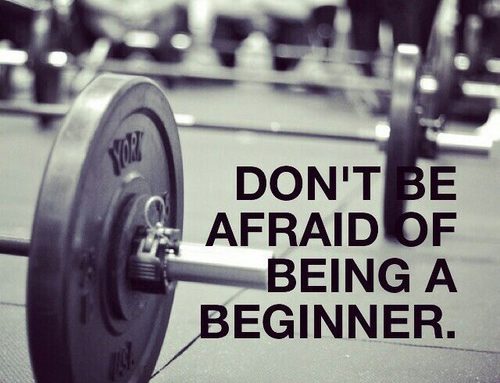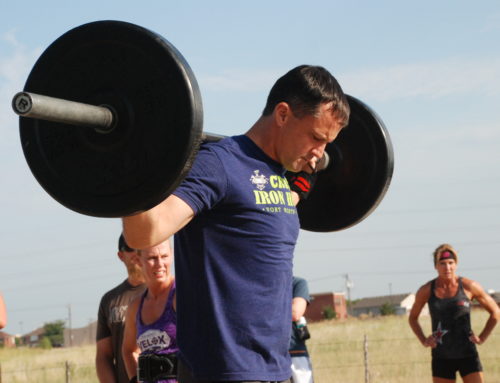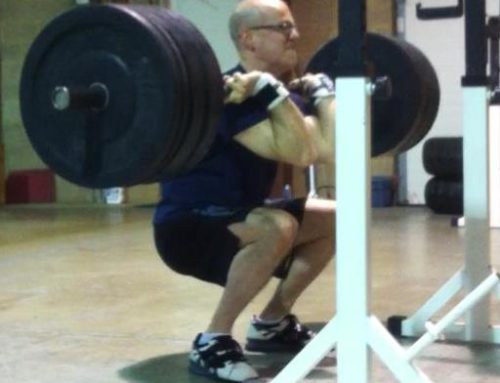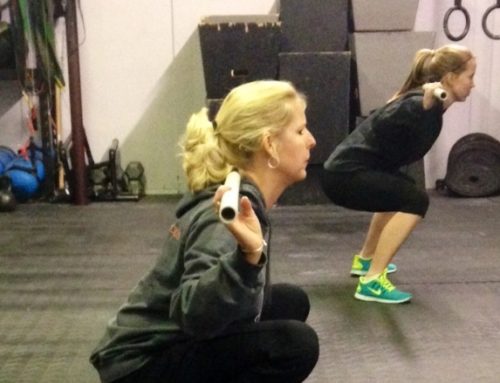Balancing elite fitness and health…over trained, under trained, trained just right
So in the previous blog we introduced the idea that some are fit but not necessarily healthy. Then I had several comments as to what to do about it, how to cycle, and how to train while letting injuries heal?
The over-reaching principle here is to know your body first! Know when you are undertrained, over-trained or trained just right. You have to recognize the signs/symptoms of all three of these states.
Over-Trained
1. You repeatedly fail to complete your normal workout.
I’m not talking about normal failure. Some people train to failure as a rule, and that’s fine. I’m talking failure to lift the weights you usually lift, run the hill sprints you usually run, and complete the hike you normally complete. Regression. If you’re actively getting weaker, slower, and your stamina is deteriorating despite regular exercise, you’re probably training too much. Note, though, that this isn’t the same as deloading. Pushing yourself to higher weights and failing at those is a normal part of progression, but if you’re unable to lift weights that you formerly handled with relative ease, you may be overtrained.
2. You’re losing leanness despite increased exercise.
If losing fat was as easy as burning calories by increasing work output, overtraining would never result in fat gain – but that isn’t the case. It’s about the hormones. Sometimes, working out too much can actually cause muscle wasting and fat deposition. You’re “burning calories,” probably more than ever before, but it’s predominantly glucose/glycogen and precious muscle tissue. Net effect: you’re getting less lean. The hormonal balance has been tipped. You’ve been overtraining, and the all-important testosterone:cortisol ratio is lopsided. Generally speaking, a positive T:C ratio means more muscle and less fat, while a negative ratio means you’re either training too much, sleeping too little, or some combination of the two. Either way, too much cortisol will increase insulin resistance and fat deposition, especially around the midsection. Have you been working out like a madman only to see your definition decrease? You’re probably overtraining.
3. You’re lifting/sprinting/HIITing hard every single day.
The odd genetic freak could conceivably lift heavy, sprint fast, and engage in metabolic conditioning nearly every day of the week and adequately recover, without suffering ill effects. Chances are, however, you are not a genetic freak with Wolverine’s healing factor. Most people who maintain such a hectic physical schedule will not recover (especially if they have a family and/or a job). Performance will suffer, health will deteriorate, and everything they’ve worked to achieve will be compromised. Many professional athletes can practice for hours a day every day and see incredible results (especially if they are using performance enhancing substances), but you’re not a professional, are you?
4. You’re primarily an anaerobic/power/explosive/strength athlete, and you feel restless,
excitable, and unable to sleep in your down time.
When a sprinter or a power athlete overtrains, the sympathetic nervous system dominates. Symptoms include hyperexcitability, restlessness, and an inability to focus (especially on athletic performance), even while at rest or on your off day. Sleep is generally disturbed in sympathetic-dominant overtrained athletes, recovery slows, and the resting heart rate remains elevated. Simply put, the body is reacting to a chronically stressful situation by heightening the sympathetic stress system’s activity levels. Most PBers who overtrain will see their sympathetic nervous system afflicted, simply because they lean toward the high-intensity, power, strength side.
5. You’re primarily an endurance athlete, and you feel overly fatigued, sluggish, and useless.
Too much resistance training can cause sympathetic overtraining; too much endurance work can cause parasympathetic overtraining, which is characterized by decreased testosterone levels, increased cortisol levels, debilitating fatigue (both mental and physical), and a failure to lose body fat. While I tend to advise against any appreciable amount of endurance training, chronic fatigue remains an issue worthy of repeating. Being fit enough to run ten miles doesn’t mean that you now have to do it every day.
6. Your joints, bones, or limbs hurt.
I’m unaware of any clinical tests that can identify overuse injuries specifically caused by overtraining, but don’t you think that pain in your knee might be an indication that you should reassess how you exercise that knee? In the lifts, limb pain can either be DOMS (delayed onset muscle soreness) or it can indicate poor technique or improper form; DOMS is a natural response that should go away in a day or two, while poor form is more serious and can be linked to overuse or overtraining. With regard to endurance training, if you creak, you wince at every step, and you dread staircases, it may be that you’ve run too far or too hard for too long. The danger here is that your daily endorphin high has over-ridden your natural pain receptors. You should probably listen to them more acutely. I tuned them out for longer than I should have and it cost me my career as a marathoner (so I got that going for me, which is nice).
7. You’re suddenly falling ill a lot more often.
Many things can compromise your immune system. Dietary changes (especially increased sugar intake), lack of Vitamin D/sunlight, poor sleep habits, mental stress are all usual suspects, but what if those are all locked in and stable? What if you’re eating right, getting plenty of sun, and enjoying a regular eight hours of solid sleep each night, but you find yourself getting sick? Nothing too serious, mind you. A nagging cough here, a little sniffle or two there, some congestion and a headache, perhaps. These were fairly normal before you went Primal, but they’ve returned. Your immune system may be suffering from the added stress of your overtraining. It’s an easy trap to fall into, simply because it’s often the natural progression for many accomplished athletes or trainees looking to increase their work or improve their performance: work harder, work longer. If you’ve recently increased your exercise output, keep track of those early morning sore throats and sneezes. Any increases may indicate a poor immune system brought on by overtraining.
8. You feel like crap the hours and days after a big workout.
Once you get into the swing of things, one of the great benefits of exercise is the post-workout feeling of wellness. You’ve got the big, immediate, heady rush of endorphins during and right after a session, followed by that luxurious, warm glow that infuses your mind and body for hours (and even days). It’s the best feeling, isn’t it? We all love it. What if that glow never comes, though? What if instead of feeling energetic and enriched after a workout, you feel sketchy and uncomfortable? As I said before, post-workout DOMS is completely normal, but feeling like death (mentally and physically) is not. Exercise generally elevates mood; if it’s having a negative effect on your mood, it’s probably too much.
http://www.marksdailyapple.com/overtraining/#ixzz2QSAOjbpm
Under-Trained
- Poor performance gains
- Minimal soreness after training sessions
- No or minimal change in body composition or shape
- No change in health markers
- Minimal or no change is skill level
- Minimal or no improvement in energy level or sense of wellness
Trained Just Right
- Gradual gains in performance
- Soreness that resolves after each training session and allows continued progression
- Improvement in mood and an elevated sense of wellness
- Improved general quality of life
- Change in body composition with increased muscle tone, reduced body fat supported by diet
- Improved health markers
- Skill level is gradually increasing
- Aches and pains are either disappearing or managed at a level that does not impair performance
- Things in life that require physical capacity are simply getting easier
The next step would be to ask yourself, which one of these best fits my training program right now? If you are under or over-trained your program has to change or you can expect the same or worse results. Take each section and put a check mark by which statement best applies to you. Then total the check marks and score which section you have the most total count. This gives you a simple metric estimate as to where you are in your program. There may be some tweaking that is required to get you to that next level of performance, but at least you will have an idea as to where you’re at in your training. There are also several other more scientific methods to determine how training is impacting athletes. Following metrics such as HRV, resting HR upon waking, body composition and respiration at rest can be useful tools for the more scientifically minded athlete.
Training while injured is possible, but modifications to programming are required to allow the injured part to heal. There is no one answer on how to train while injured other than to say it is dependent on the severity, location, type and status of the injury. In general, staying active and mobile is important but the injury may require a reduction in loads, frequency, and/or duration of training sessions. The most important thing is to find the root cause of the injury and not treat symptomatically.
Training just right for the newbie athlete is easier than for the athlete that has some time under the bar or in the box and has already attained some good gains. Being self aware of where you are with your training will facilitate the best results. When developing your training program, there has to be variance, undulation and periodization to cause adaptation and super-compensation.
Variance – changing frequency, duration, mode, and intensity
Undulation – a regular rising and falling of training intervention
Periodization – an organized approach with progressive cycling during a specific period
No athlete at higher levels of performance can train and expect sustainable progress without applying these principles at some fractional level. It is the conjugation of these principles that can provide elite fitness and health at the same time.






Leave A Comment